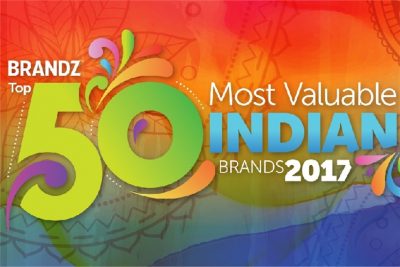Recently, you must have come across news of HDFC being named India’s most valuable brand in a report titled Brandz India Top 50 2017 by Kantar Millward Brown and WPP. The report valued HDFC’s brand at US$18 Billion.

Were you, like me, curious about how this brand value was calculated?
I went through the methodology mentioned in the report, and then followed that up with a call to a CA friend working in valuation at one of the top accounting firms. Here’s my understanding of the principle behind brand valuation.

A valuation is usually based on the sum of all the future earnings you can expect out of an asset. The basic principle in brand valuation is the same. The value of a brand is calculated by the sum of all the earnings generated by an entity due to the power of that brand, i.e. cash flows attributed solely to the power of the brand. From a theoretical finance perspective, it isn’t too complicated.
The reality, of course, is quite complicated. How does one isolate earnings from the brand alone?
Let’s take the example of Coca-Cola. Imagine that the company is producing only one product, Coca-Cola. We could study demand patterns and estimate revenue for the future. Similarly, we can determine all the associated costs for meeting the forecasted demand. These two can provide us with the valuation for the product (and in this case, the company) Coca-Cola. But this value is not just on account of the brand Coca-Cola. The value is due to the heavy machinery employed in its plants to manufacture the drink. The value is also due to the excellent distribution network of the company which ensures that the drink actually gets sold. The brand, of course, plays a role in the value; it enables Coca-Cola to generate more demand and perhaps also charge a premium compared to other local brands.
If there was another company with the exact same attributes and assets as Coca-Cola, but not holding the same brand power, we could compare the valuations of both firms, and the difference would give us the value of the Coca-Cola brand. This is obviously not possible in practice. So how do valuation experts tackle this?
One approach is to eliminate or deduct the value of other factors to arrive at the value of the brand. In our example above, it is possible to determine the contribution of plant & machinery towards the valuation. Similarly, other factors are quantified (with assumptions in case of intangible assets) and deducted. The resultant value is attributable to the power of the brand. If you are familiar with accounting, you may have heard the term “goodwill”, which also represents something similar to brand power. It is the advantage a business has gained due to the faith of its customers.
Here’s a summary of the valuation process of the Brandz Report (full explanation on page 111 of the report available on their website). Step 2 should be of specific interest to brand managers; Brandz specifies the three things which they think make people buy more and pay more for a brand.
Step 1 – Calculating Financial Value: Financial statements are analysed and income of the specific branded product is isolated from the rest of the earning. This is done by using an “Attribution Rate” (assumed on the basis of earnings reports and other proprietary data available to Kantar). Next, future earnings are forecast by using a “Brand Multiple”, very similar to the kind of multiple stock market experts use to value shares. Bloomberg data helps them in determining the multiple.
Step 2 – Calculating Brand Contribution: This is the part where the business is analysed to peel away layers, other than the brand, which contribute to the future earnings. Brandz expresses this in the form of a percentage. To simplify, they arrive at “X% of this branded product’s earning is attributed to the power of the brand alone”. To determine this Brand Contribution, they consider three main factors while conducting in-depth consumer research – a) being Meaningful (a combination of emotional and rational affinity), being Different (or at least feeling that way to consumers), and being Salient (coming to mind quickly and easily as the answer when people are making category purchases).
Step 3: Calculating Brand Value: This is arrived at by multiplying the Brand Contribution with the Financial Value.
The result is the value of the intangible asset of the brand alone, expressed as a dollar value.
This story was first published on Konversations.
For more engaging learning content, log on to Konversations.com today!




